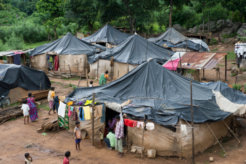Australia comprises the mainland of the Australian continent, the island of Tasmania, and numerous smaller islands. It is the world's sixth-largest country by total area. The neighbouring countries are Papua New Guinea, Indonesia, and East Timor to the north; the Solomon Islands and Vanuatu to the north-east; and New Zealand to the south-east.
The population of 26 million is highly urbanised its capital is Canberra, and its largest city is Sydney.
Indigenous Australians inhabited the continent for about 65,000 years prior to European discovery, and in the 18th century Australia's eastern half was claimed by Great Britain, and as a consequence Indigenous peoples were dispossessed from their land by Britain.
Initially, Indigenous Australians were in most states deprived of the rights of full citizenship of the new nation on grounds of their race and restrictive immigration laws were introduced to preference white European immigrants to Australia.
A 1967 Referendum regarding Aboriginal rights was carried with over 90% approval by the electorate. Legal reforms from the 1970s have re-established Aboriginal Land Rights under Australian law, 200 years after the arrival of the First Fleet.
Contemporary Australia is the product of Indigenous peoples of Australia combined with multiple waves of immigration, predominantly from the United Kingdom and Ireland. Indigenous Australians account for around 2.5% of the population, owning outright around 20% of all land - largely in the sparsely inhabited central Australian desert rather than the resource-rich coastlines.
Australia maintained hardline policies by confining people seeking asylum in offshore processing centres in Papua New Guinea and Nauru and turning back those attempting to reach Australia by boat.








